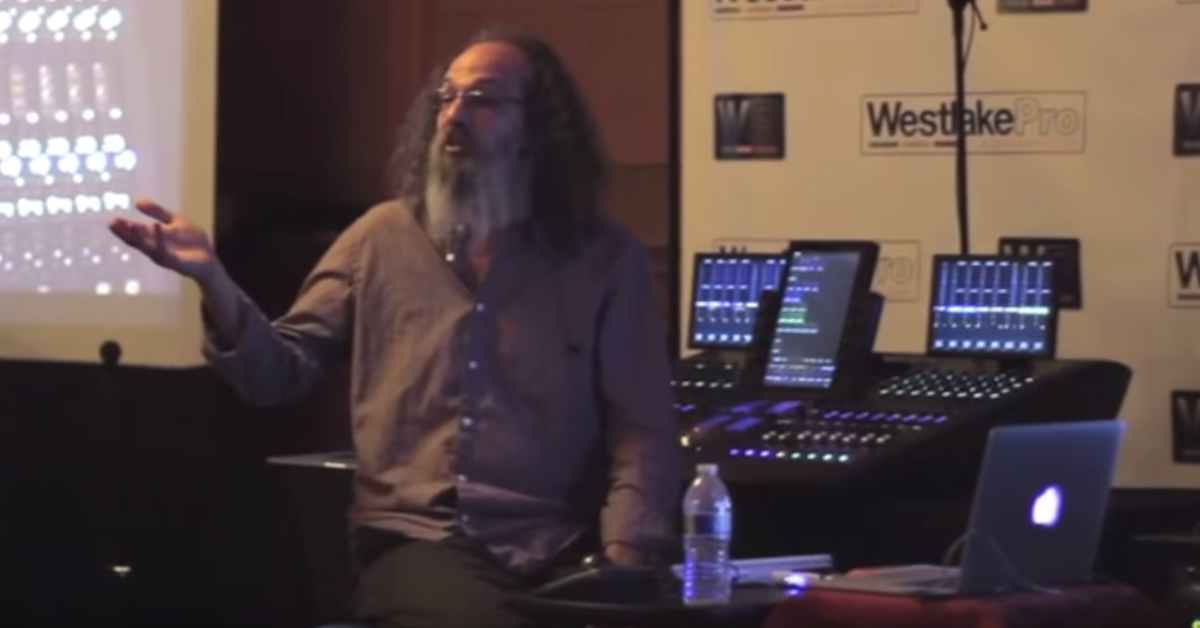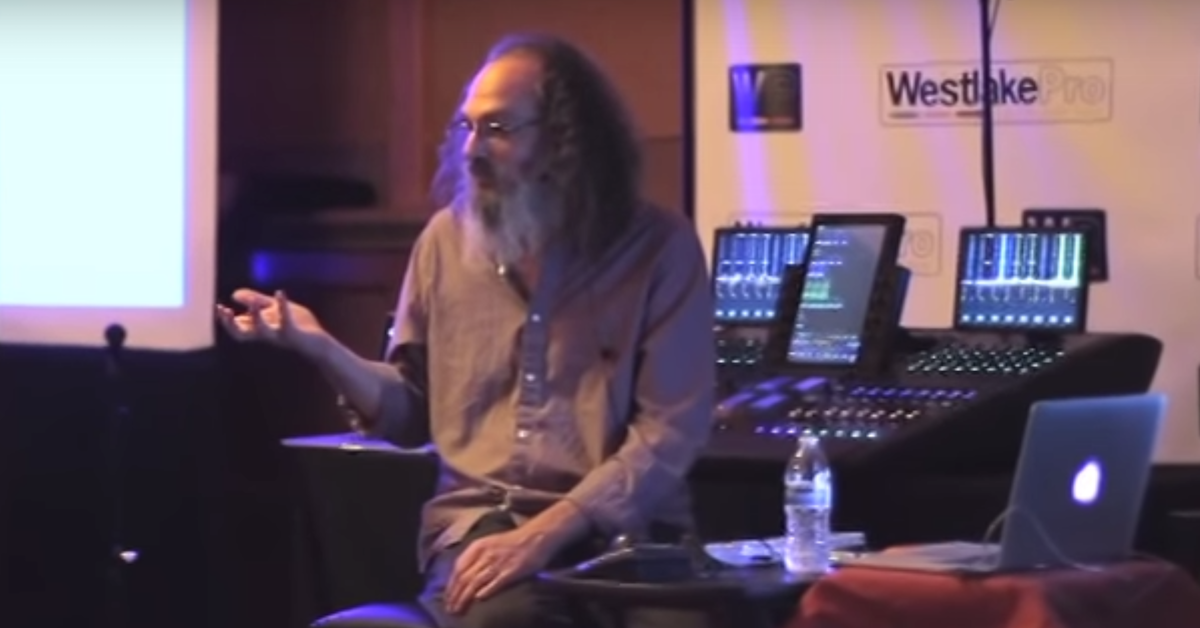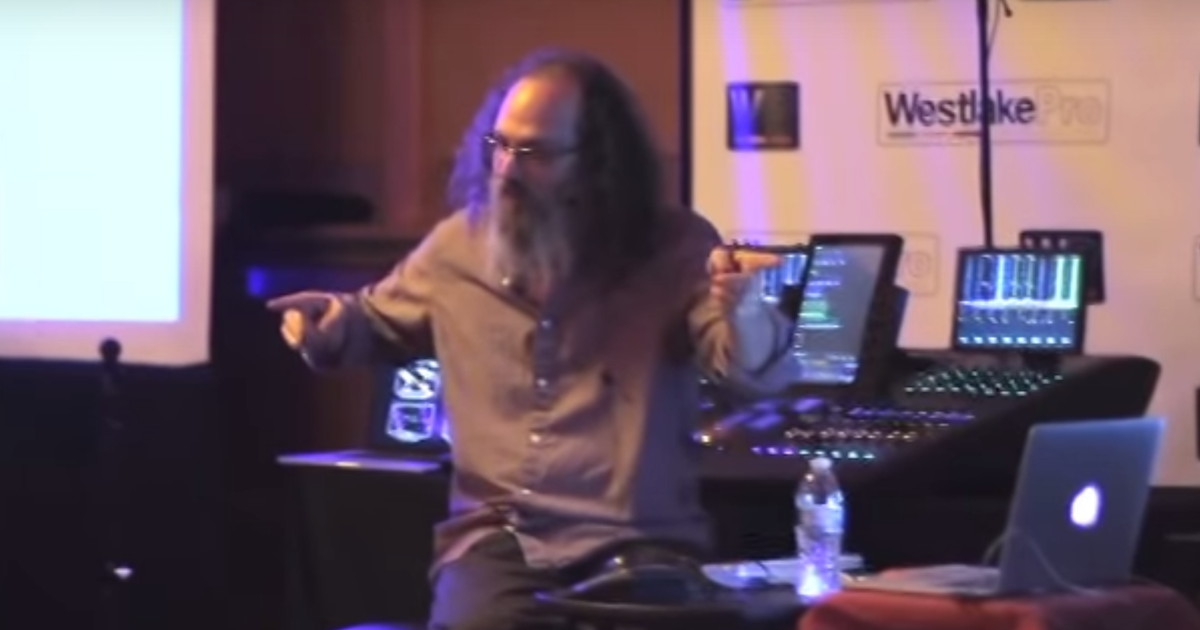Mixing Masterclass with Andrew Scheps — Part 11
That one was on the console. Yeah, yeah, and that one, I think the master buss may have actually been in the box at that point. I think I may have been coming straight off the console, and then using an aux in Pro Tools, because I was breaking things. I’ve got a pair of Lang EQs which I love on master buss. They’re Pultec-ish, but they’re solid state, so they’re not as wobbly.
You know, because that’s what they sound like, right? Pultecs are wobbly. Odd words.
Anyway, but they can only take a certain amount of level, and I was way past that level, and they were breaking up, so I couldn’t use them on the buss. So that stereo buss chain was plug-ins, but the mix was coming off of console channel.
I think it’s the same stuff. Yeah, I mean, it’s probably not all of that stuff, but it’s — yeah, it’s always the same starting points, but that’s like two-thirds of the stuff I would normally use, and I just turn things on and off, and if it sounds better, I keep it.
[someone asks question]
No, no, or the Bass Rider, or I even tend to not use the — a lot of the artist’s signature stuff, only because they’re doing so much that I don’t know how to get at it, and I don’t understand exactly how they’re doing it, but I feel like if there’s some element of it I want to change, I’m not going to be able to get to it, so I’m a little bit frightened of it.
I’m a huge fans of really simple things and using tons of them. Like, I’m really, really into modular synths, especially right now, because it’s so cool, but every single one of those modules does almost nothing, but then you have a couple hundred of them, and you hook them all together, and it does really complicated stuff.
But it’s the ability to make it do exactly what you want it to do, as opposed to kind of hoping it’s going to be cool, because especially using stuff parallel, things don’t react the way they normally would, and sometimes, it’ll be awesome, and then all of a sudden, it really, really sucks, and there’s no in between, and there’s no way to fix it, and you end up having to kind of start over on parts.
[someone asks question]
Yeah. Yeah, yeah, yeah. When the UAD 102 came out, the ATR-102 came out, I had that on every mix, and I overused it to the point where I had to make myself stop using it.
Yeah, of course it can. I mean, I think the thing to remember is that everything is just about how it sounds at the end of the day. You know, it doesn’t matter what you use. Nobody gets a record and then there’s a list of the plug-ins used on that song on the inside, and they go, “Oh, this is awesome!”
They listen to the mix and that’s it, so if that kind of color works for you, that’s amazing, and for years, I used HEAT after they had HEAT, and before that, I was using Phoenix, and sometimes it would be — like, there was probably about a year where insert A of every track in my session was Phoenix, and there was an all group that would group the controls for the Phoenix. So I would dial it in just like HEAT would.
Then HEAT came out and I was using that. Now I don’t use any plug-ins like that. I just don’t. I feel like, “Oh, it’s making it too dense, I don’t have as much room,” because my mix is just so dense anyway with the parallel compression, that’s where the color comes from. Not from those plug-ins.
But yeah, they’re all awesome, and the other thing is that I was lucky enough to start on fully analog gear. So that’s how I learned to make records, and then digital happened, and digital sounded terrible, but we all did it for the convenience factor and all of the rest of it, and now digital sounds pretty damn good.
I don’t feel like I’m really losing something mixing this way anymore, and I did five years ago, so things come and go, but there’s also this massive amount of nostalgia for analog from people who never used it.
First of all, go cut tape. Well seriously, go track with a band and comp together three takes in time for them to do an overdub for them immediately, or have them overdub on just one of the three takes you’re going to use, and then fly the overdub to the edit later.
Have fun with that. Do a window edit to get rid of a click. Try four different edits immediately on tape. So you have to safety it four times, cut up… So it doesn’t matter. It doesn’t matter. So if the tape plug-ins work for you, then absolutely, use them, put them on every single track. But also, the only thing I would say, and I’m going on and on and on, is to be careful about things that color and using a lot of them, because it can be like this Auto-Tune thing where you don’t hear it at first, you only hear the stuff that’s good, and three months later, when you’re really used to it, and you hear the artifacts of it, you realize, “Wow, there’s way too much of that on there.”
So everything in moderation except for compression. Use tons of that.





